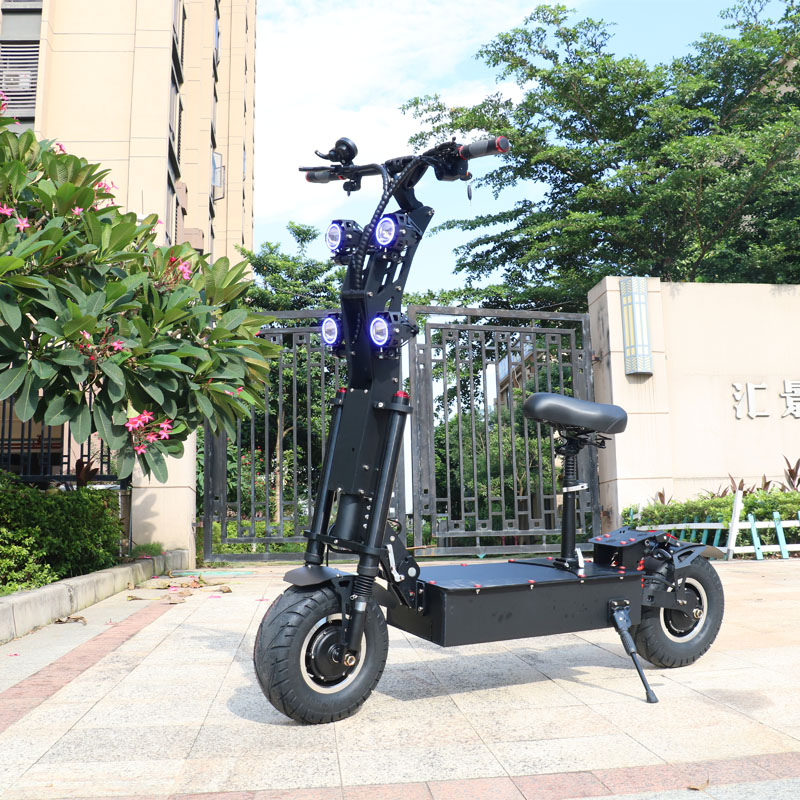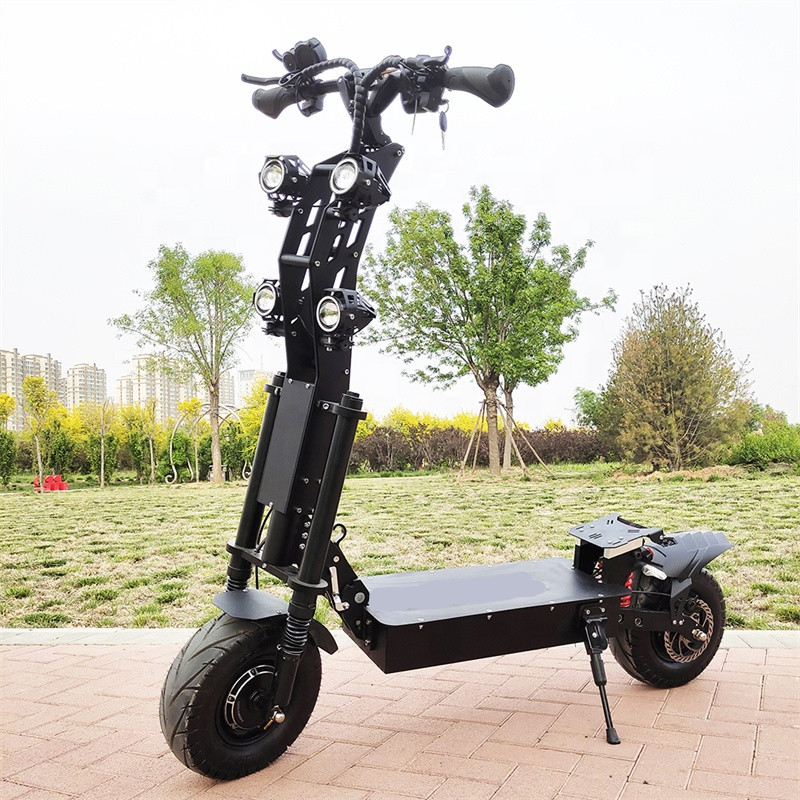Description
72v electric scooter
electric scooter fat tire
long range electric scooter
| Parameter | |
| Frame | High strength aluminum alloy 6061, surface paint |
| Forking forks | One forming front fork and rear fork |
| Electric machinery | 13 “72V 15000W brushless toothed high speed motor |
| Controller | 72V 100 SAH*2 tube vector sinusoidal brushless controller (mini type) |
| Battery | 84V 70 AH-85 AH module lithium battery (Tian energy 21700) |
| Meter | LCD speed, temperature, power display and fault display |
| GPS | Location and telecontrol alarm |
| Braking system | After one disc, does not contain harmful substance, in compliance with international environmental requirements |
| Brake handle | Forging brake of aluminum alloy with power breaking function |
| Tyre | Zheng Xin tire 13 inch |
| Headlight | LED lenticular bright headlights and driving lights |
| Maximum speed | 125 km |
| Extension mileage | 155-160km |
| Motor | 7500 watt per piece |
| Wheel | 13 inch |
| Net weight and gross weight | 64kg/75kg |
| Product size | L* w* h: 1300*560*1030 (mm) |
| Packaging size | L* w* h: 1330*320*780 (mm) |









The electrification of bicycles has become a hot topic in the field of transportation in recent years. With increasing environmental awareness and the growing problem of urban traffic congestion, more and more people are turning to bicycles as a means of transportation. The emergence of electric bicycles has further provided riders with a more convenient and efficient way to travel.
Firstly, the energy-saving and environmental protection characteristics of electric bicycles cannot be ignored. Compared to traditional fuel vehicles, electric bicycles do not require fuel combustion and produce no tailpipe emissions, resulting in minimal environmental pollution. Additionally, electric bicycles can be charged using various sources of electricity, such as solar or wind energy, further reducing their reliance on traditional energy sources and lowering carbon emissions. This is of great significance for improving air quality and reducing greenhouse gas emissions.Secondly, the cost of using electric bicycles is relatively low. Compared to traditional cars, electric bicycles do not require expensive fuel and maintenance costs; they only need regular charging. Furthermore, the maintenance of electric bicycles is relatively simple, requiring no complex mechanical repairs and thus saving on repair costs. For short-distance commuters, using electric bicycles can significantly reduce travel expenses and improve economic efficiency.In addition, the flexibility and convenience of electric bicycles are also among the reasons for their popularity. Unlike public transportation, electric bicycles are not restricted by time or route, allowing users to park and start at any time, making them convenient and fast. Especially in busy cities, electric bicycles can help avoid traffic congestion, saving a lot of time. Meanwhile, due to their compact size, electric bicycles can easily navigate through crowded city roads, improving travel efficiency.However, the development of electric bicycles also faces some challenges. The first issue is the battery’s endurance capacity. Currently, the range of electric bicycles is generally short, requiring frequent charging, which brings inconvenience to users. The second challenge is the safety of electric bicycles. Due to their high speed, electric bicycles are prone to traffic accidents. Therefore, it is necessary to strengthen the supervision and safety education of electric bicycles and raise riders’ safety awareness.
In conclusion, the electrification of bicycles is an environmentally friendly, economical, and convenient mode of transportation. It not only reduces dependence on traditional energy sources and lowers carbon emissions but also saves travel costs and improves travel efficiency. Despite some challenges, with technological advancements and policy support, it is believed that electric bicycles will be widely used and promoted in the future.





